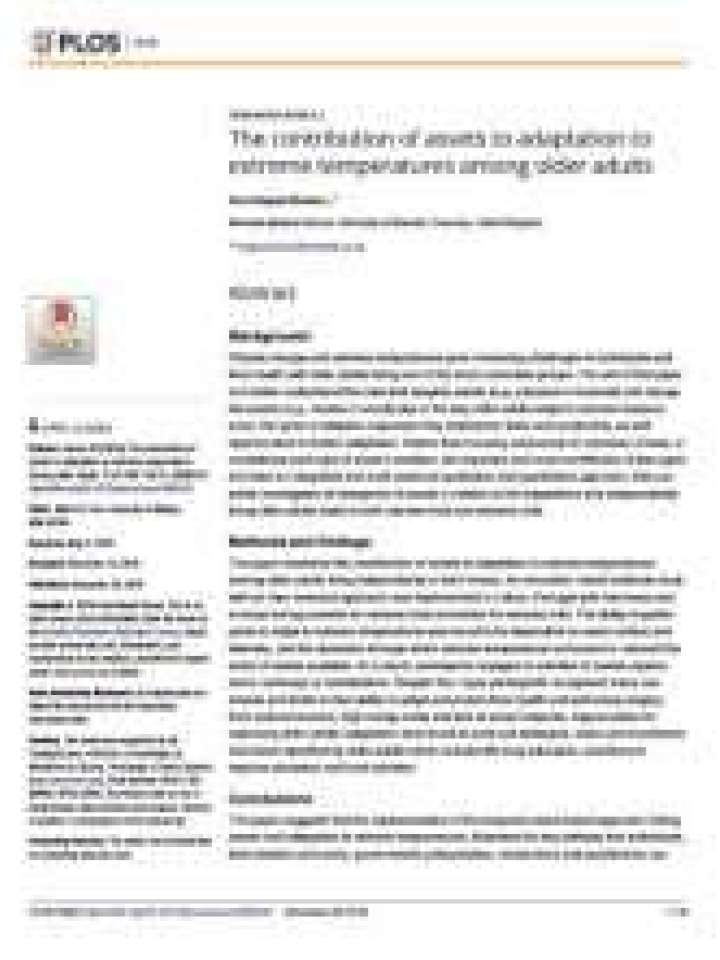The contribution of assets to adaptation to extreme temperatures among older adults
Climate change and extreme temperatures pose increasing challenges to individuals and their health with older adults being one of the most vulnerable groups. The aim of this paper is to better understand the roles that tangible assets (e.g., physical or financial) and intangible assets (e.g., human or social) play in the way older adults adapt to extreme temperatures, the types of adaptive responses they implement, limits and constraints, as well opportunities for better adaptation. Rather than focusing exclusively on extremes of heat, or considering each type of asset in isolation, the important and novel contribution of this paper is to take an integrated and multi-seasonal qualitative and quantitative approach, that conjointly investigates all categories of assets in relation to the adaptations that independently-living older adults make to both extreme heat and extreme cold.
The paper examines the contribution of assets to adaptation to extreme temperatures among older adults living independently in their homes in Lisbon, Portugal. The paper suggests that the implementation of the proposed asset-based approach linking assets and adaptation to extreme temperatures, illustrates the key pathway that individuals, their families and carers, governments, policymakers, researchers and practitioners can follow to ensure effective adaptation and promote health and well-being. Supporting older adults’ adaptation to extreme temperatures is possible and can be complemented with efforts to reduce older adults’ vulnerability and building resilience to extreme temperatures. These findings pose concrete implications for policy and practice, including for example the need for implementation of measures and actions to reduce poverty, reduce energy costs, improve the quality of the housing stock and improve older adults’ social networks.
Explore further
